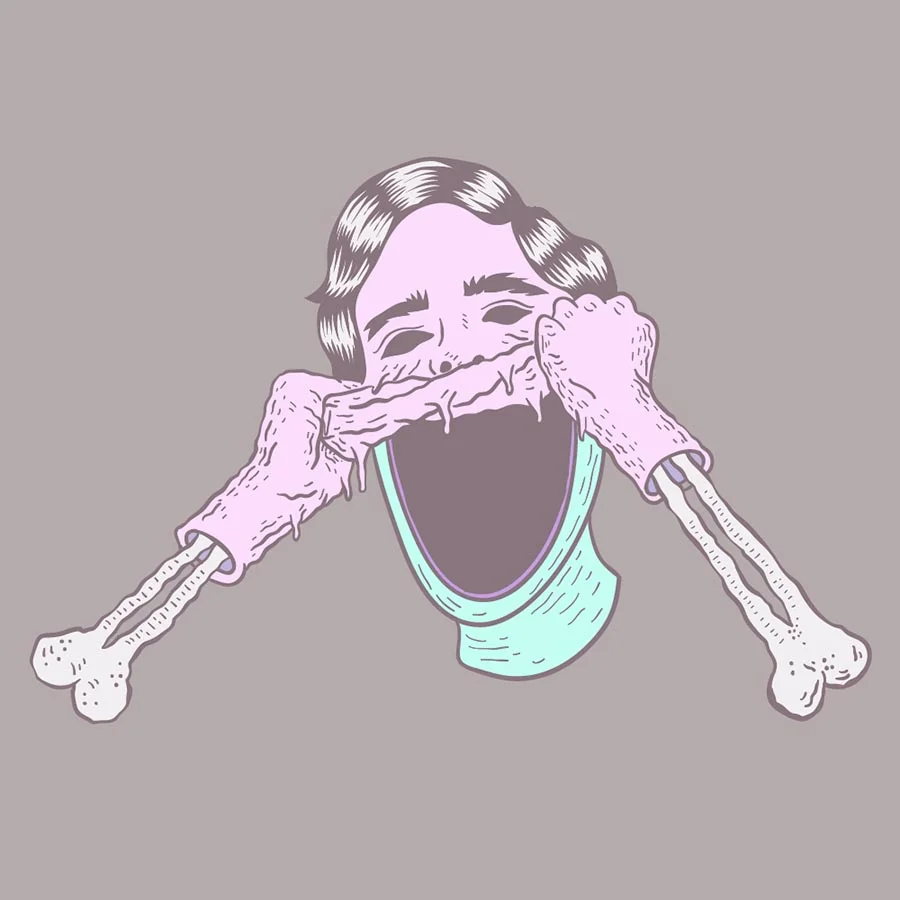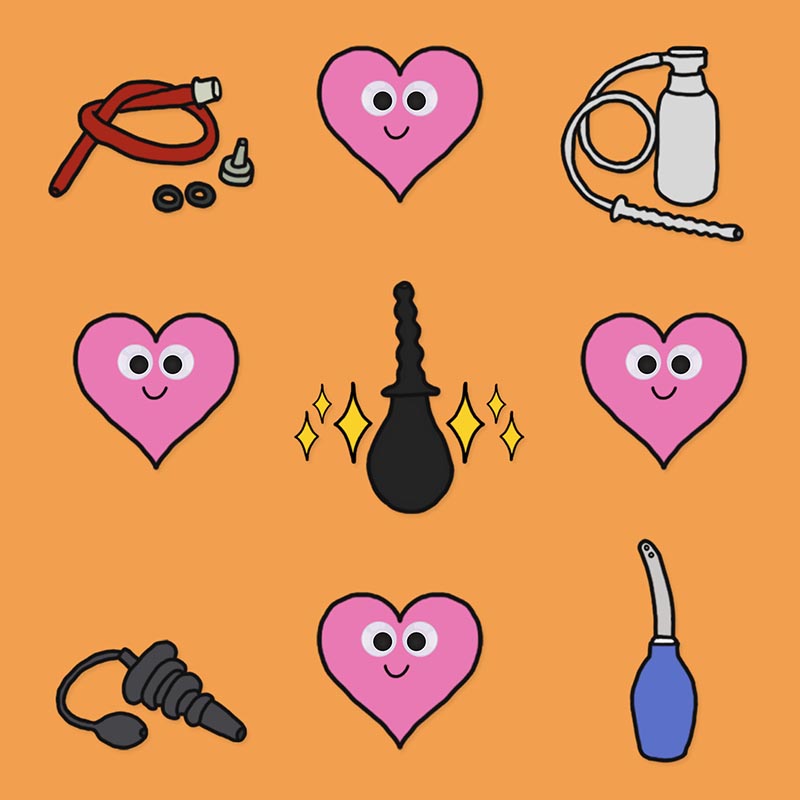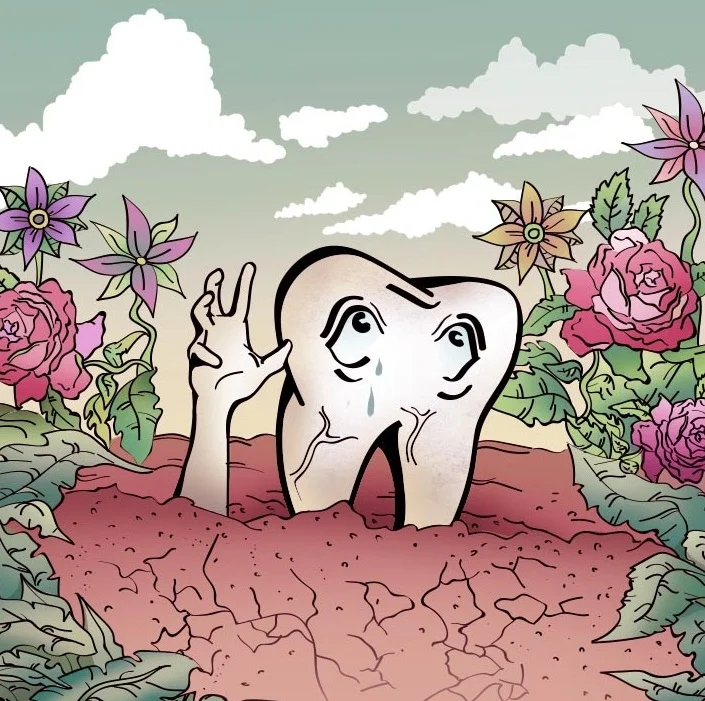Can You Change Your Face Shape Without Surgery?
“Mewing” promises aesthetic and structural improvements to one’s visage through simple mouth exercises.
By Jessie Schiewe
Good news: You don’t have to get surgery to change your face shape. (Art: Nes Vuckovic)
Blame it on the thumbsucking.
As a child, Nicola enjoyed sticking her thumb in her mouth, a habit that may have contributed to her ever widening overbite. By the time she was 10, she became aware “there was something different about [her] face.”
Her mom had first noticed it when she was 3 years old and watched the space between her upper front teeth and lower front teeth gradually increase over the years.
When she turned 11, Nicola realized “it wasn’t getting any better” and sought help from her dentist, who referred her to an orthodontist. What she’d hoped could be cured with braces actually turned out to be a lot more complex. The orthodontist told her she needed a double jaw surgery to fix her misaligned mouth and that she’d have to wait until after puberty to get it.
Nicola knew pretty quickly this was not a route she wanted to take. Not only was it costly, but it would involve a lot of pain and some risks.
“It sounded a bit scary that they take the whole jaw out and then move it forward,” she explained in a Youtube video. “That didn’t seem too appealing.”
Luckily, Nicola’s grandmother happened to read a newspaper article outlining an ulterior option — one that wouldn’t require surgery or any sharp, painful objects.
What Is Mewing?
Mewing is a D.I.Y. technique developed more than 50 years ago by a British professor named John Mew and his son Dr. Mike Mew. A form of orthotropics, it involves changing and guiding the growth of your face shape with correct oral posture and a few behavioral changes.
It claims that something as simple as where you rest your tongue or how often your mouth is open can impact how you look overtime. Those who have tried mewing believe that it can remedy both aesthetic and oral flaws.
“It’s taught within the universities that it’s not possible to alter the growth of the jaws, certainly not to that extent,” John Mew explained in a YouTube video.
“However, in my experience, if you can alter the posture, particularly in a young child, you will find that you can get quite a change in the structure, growth, and shape of both the upper and lower jaws and most of the tissues around them.”
While mewing is a tactic best learned when young, when your bones are more malleable and it’s easier to develop new behaviors, anyone can pick it up and still, reportedly, see an impact. For many people, mewing is a means of avoiding surgery, such as a jaw realignment or a chin implant, but it can also help with other structural and aesthetic issues.
The Mews claim that practicing good oral posture can align your teeth and alleviate oral and neck pains created by jaw clenching or teeth grinding.
It can quash mouth breathing and help you take in more oxygen by training you to breathe through your nose. It can also possibly alleviate sleep apnea, helping you sleep better and feel more rested.
Other so-called benefits of mewing include shortening the length of your face and making it more slender. Your jawline and cheekbones might become more pronounced from doing it, and your overall facial symmetry can be improved, too.
It takes a long time to see results, and it can be hard to remember to constantly “mew,” but those who have tried it tout mewing as being a cost-effective (read: free) alternative to surgery.
How to Mew
There are three keys to mewing:
Keep your lips together
Keep your teeth together
Keep your tongue on the roof of your mouth
Combined, these three behaviors reportedly prevent your face from sagging and encourage your facial structure to grow outwards.
Most people, however, don’t do these three things naturally. A big reason for this is because many of us breath through our mouths, not our noses. Doing this means that our mouths are kept open, our jaws are hanging loose, and our teeth are apart for long periods of time. This can lead your face to grow longer and more narrow and your teeth to become misaligned.
By keeping your lips and teeth together and your tongue on the roof of your mouth, orthotropics claims you are tightening your facial structure, activating your horizontal muscles, and preventing your features from becoming a victim to gravity. It is also recommend to sleep with your lips closed and to eat hard foods that involve a lot of chewing to help define and exercise the jawline.
Mewers claim these behaviors can create a world of difference when practiced over a period months if not years.
However, not all facial complications can be cured by it. There are many oral issues that require more intensive treatments in addition to mewing. Braces and other orthodontics might still be needed to align the jaw and straighten teeth. And those with extreme overbites or underbites might also need to wear mouth guards, known as splints, to further train their bite to sit correctly.
The Popularity of Mewing
Scroll through YouTube and you’ll find a bevy of videos from influencers and bloggers touting the face-changing effects of mewing. The more popular ones have upwards of 1 million views, which goes to show you how many people are curious about improving their looks without going under the knife. There’s even a mewing sub-group on Reddit with more than 10,000 followers who share tips and advice, such as wearing a pair of underwear around your head to keep your mouth shut while you sleep.
In fact, the term “mewing” got its start online. “I have no idea where it came from,” Dr. Mike Mew told Vice. "I just started noticing it in the comments below the videos." Previously, he and his father had referred to mewing simply by its medical name: “orthotropics.”
But in many ways, its new name is a more perfect fit for the D.I.Y. treatment. “Mewing” is easy to pronounce, easy to remember, and far less jargon-y than “orthotropics.”
When it comes to studies and research on mewing, there’s still a lot that needs to be done. And even though the internet has hailed it as a miracle worker, the medical community thus far has been skeptical of its impact.
Still, those curious about the benefits of mewing need only look at the many before and after photos posted online to see that the technique does change your face, however slightly. It might not treat every problem — and it could create some new ones — but if you keep it up, something’s bound to happen.






















A nonprofit has an innovative solution for cleaning up oil spills.